Today we left Cape Cod and headed back to Boston. It was sad times to leave the beach behind. However, we made the most of our drive back by stopping in Plymouth, Massachusetts.

Leaving the Cape.
Our first stop upon leaving Cape Cod was Plimoth Plantation. Plimoth Plantation is a living history museum. Part of the museum depicts the life of the English settlers who came to the US aboard the Mayflower in 1620. Another area replicates the Native American villages of the time.
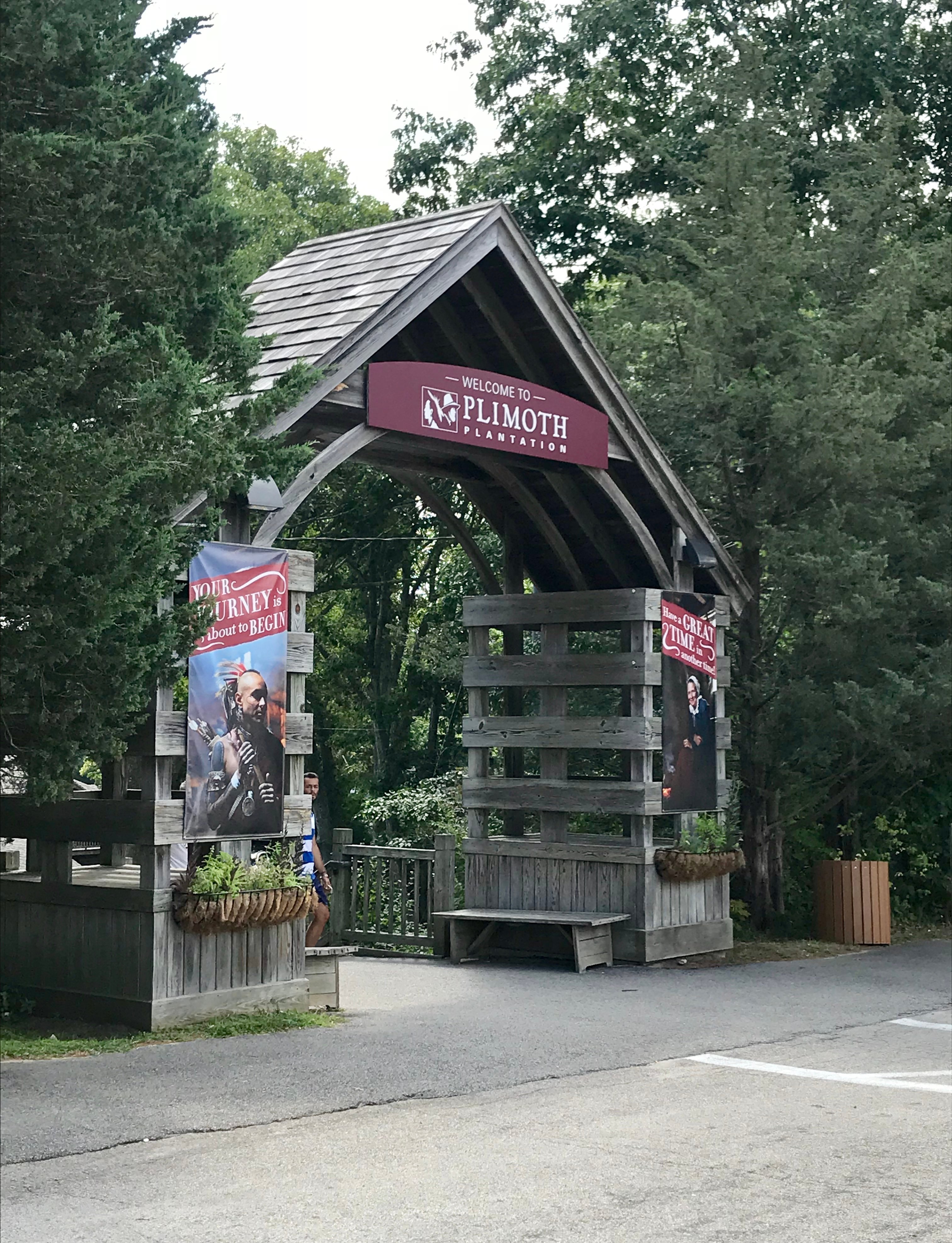
Entrance.
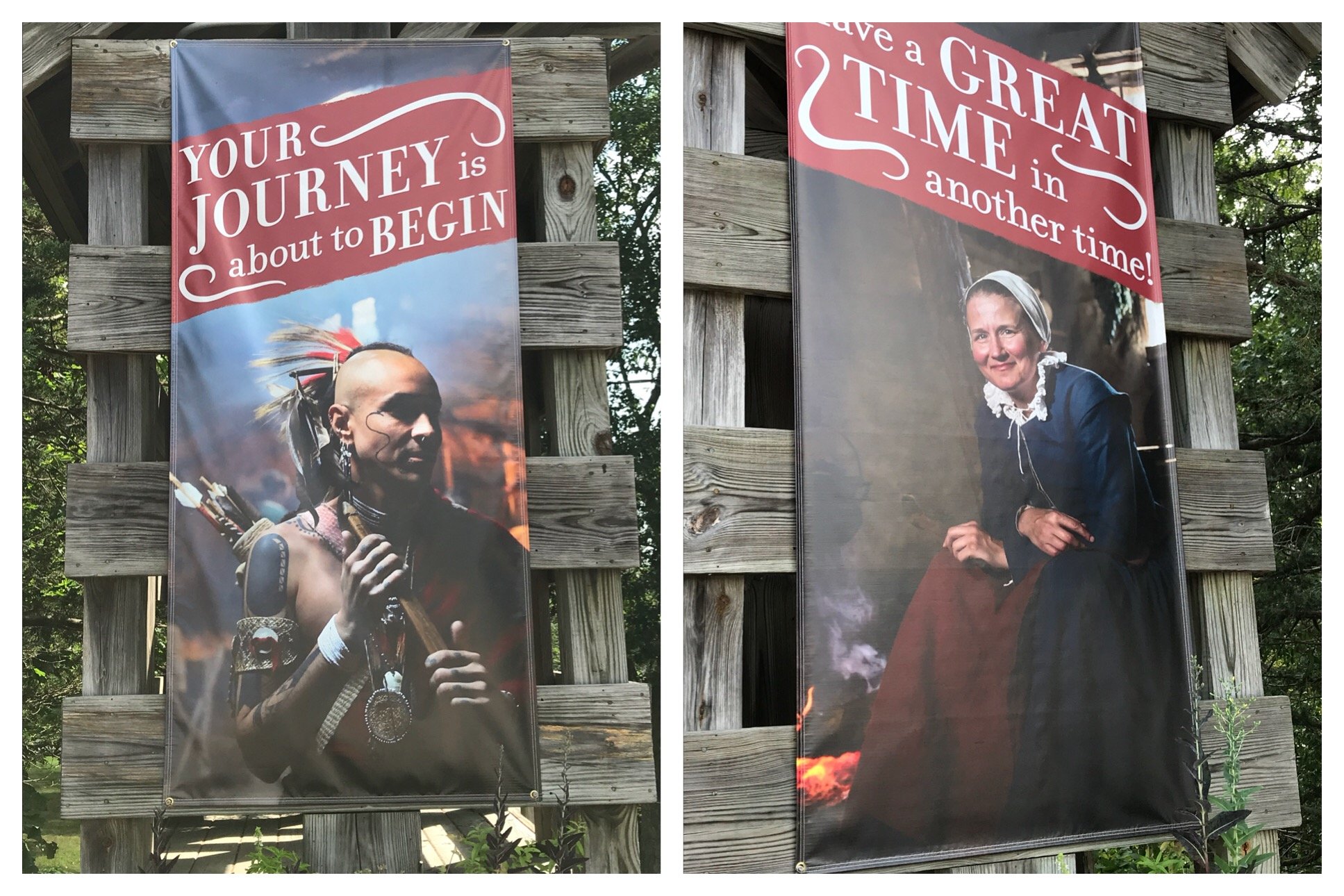
Native American history and the story of English settlers are shared at the museum via actors throughout the park.
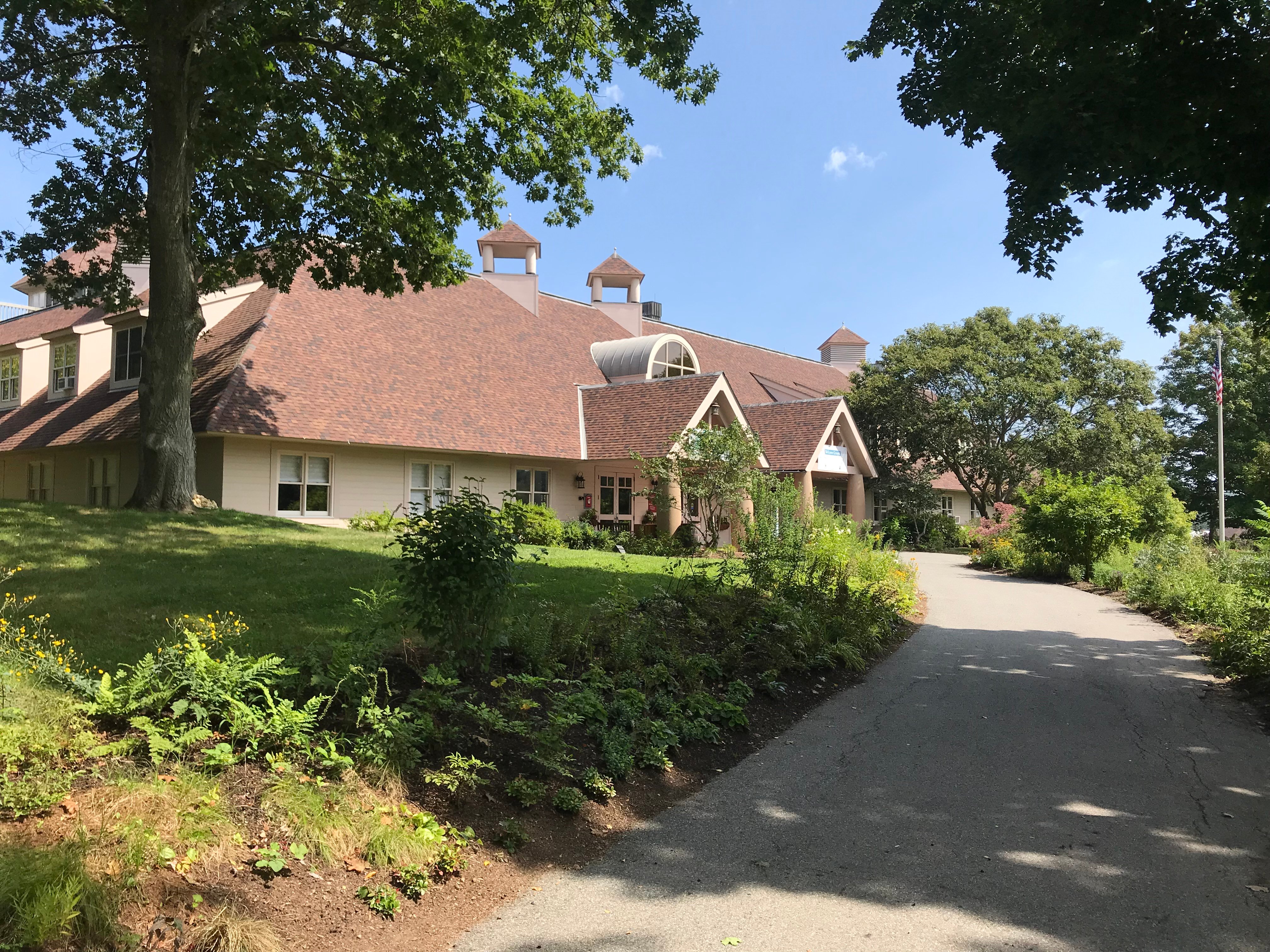
Visitor’s Center
Our first stop at the plantation was the visitors center. The visitors center had a large gift shop, cafeteria (offering modern and traditional 1600’s style food), a tiny museum and a theater. After purchasing tickets for $28/adult we were directed to a theater for a 13 minute film.
The film explained the path to follow through the park and about the different roles played by various park employees. Individuals in traditional English costume were playing roles of various Mayflower passengers and would be able to share stories of their voyage across the Atlantic and details about life in the new colony. The individuals in Native costume would do the same but would also lend their perspective on modern life and maintaining their culture. Eveyone in a Native “role” was in fact a current member of a local tribe. Docents in modern vests with name tags were also on hand to lend a historical perspective on the plantation’s exhibits.
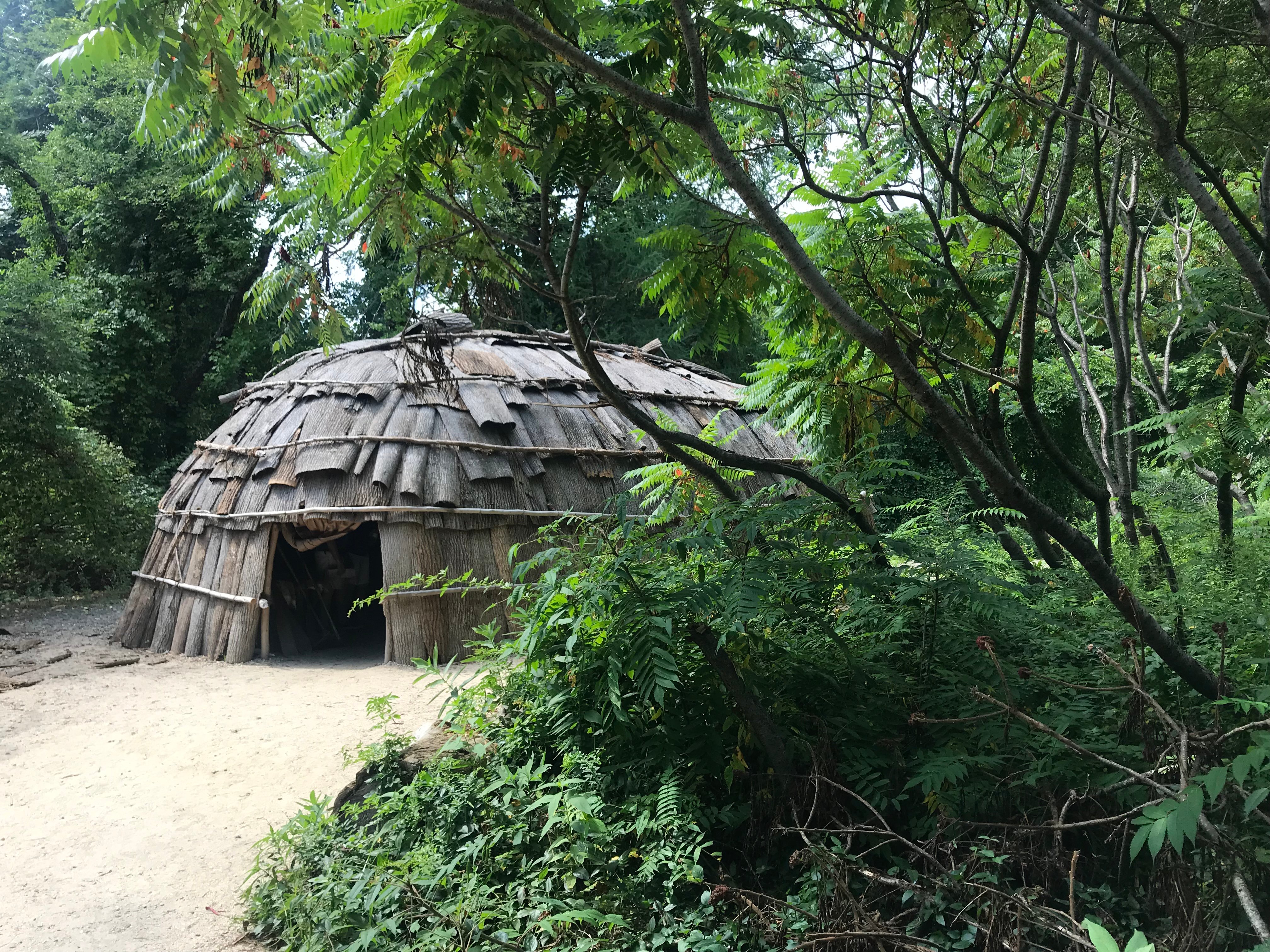
A bark covered long house known as a wetu.
After the film, guests made their way to the plantation’s first stop, the Wampanoag Homesite. Here there were traditional Wampanoag buildings including a long house. There was also a small garden and a display of traditional canoes that were made by using fire to hollow Our a tree A woman was also making baskets and mats out of reeds.
Our next stop was the museum’s craft center. Here artisans made pottery, head dresses, candles and blankets using traditional tools. There was also another gift shop and dining establishment within the craft center.
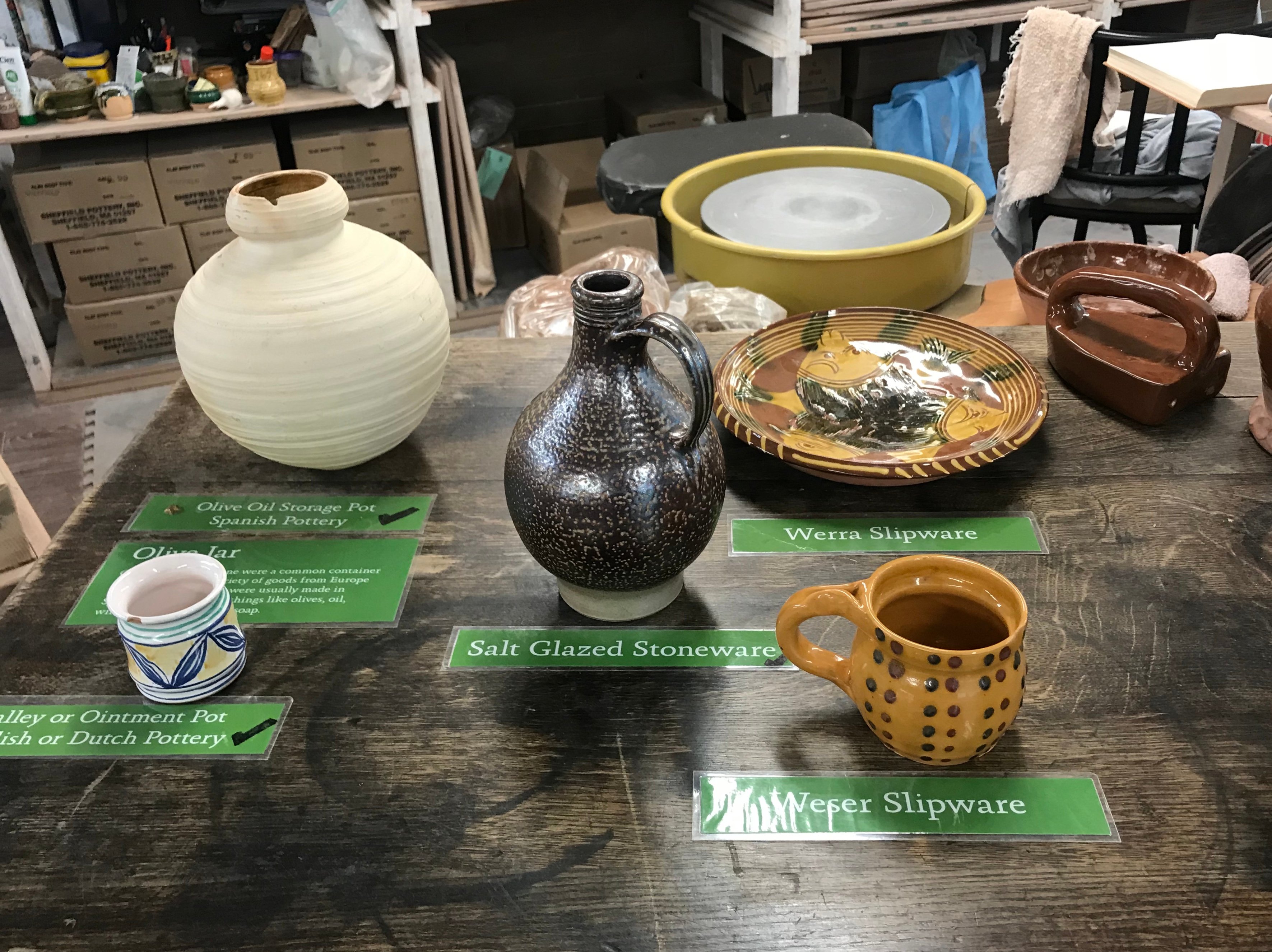
Pottery
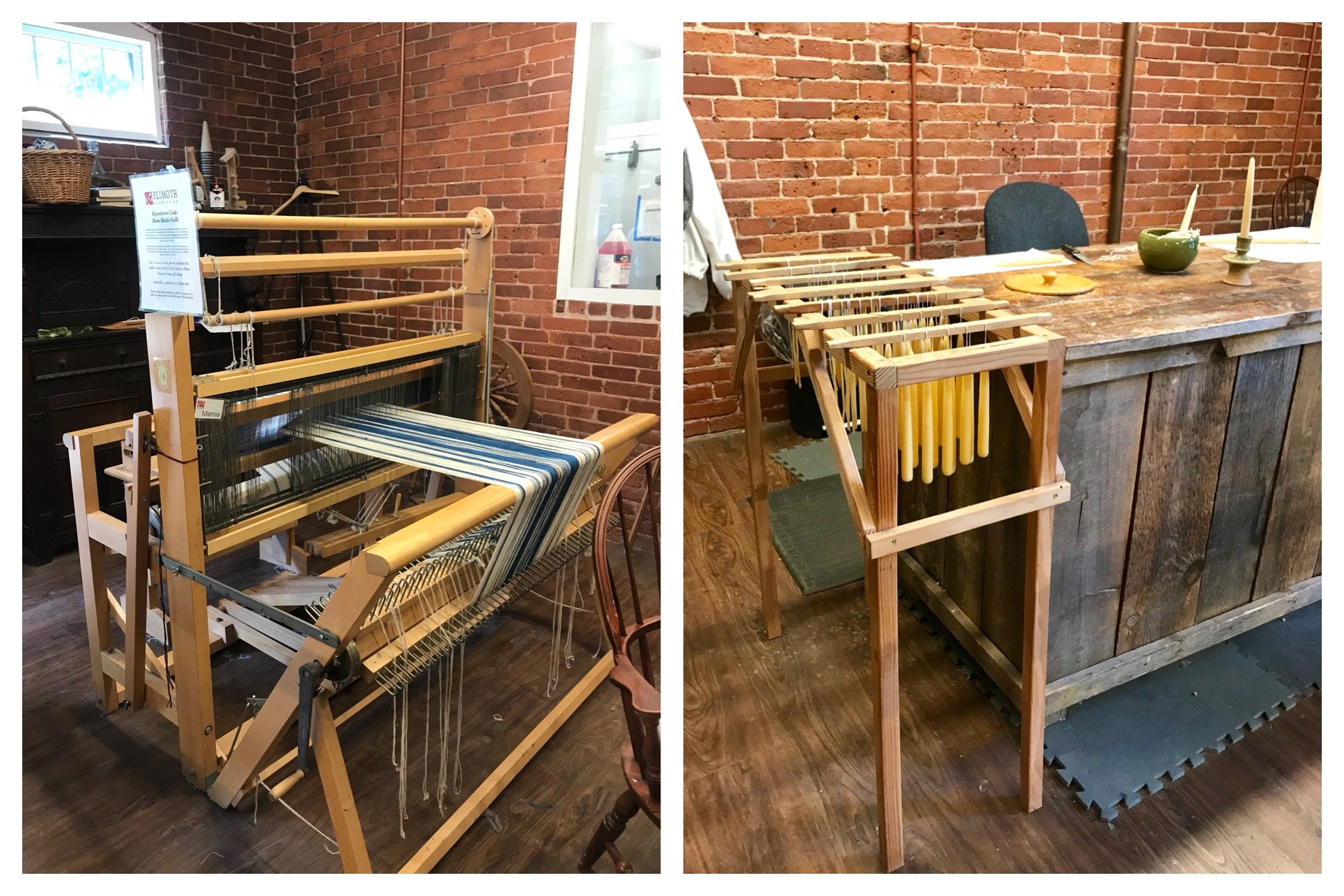
Weaving and candle making.
The final stop within the museum was the 17th century English Village. This area replicates the original settlement built by the Plymouth colonists (aka Pilgrims). In the village there are several small wooden homes to explore, each furnished in a 17th century style. There are also chickens, goats and small vegetable gardens throughout this portion of Pilmoth Plantation.
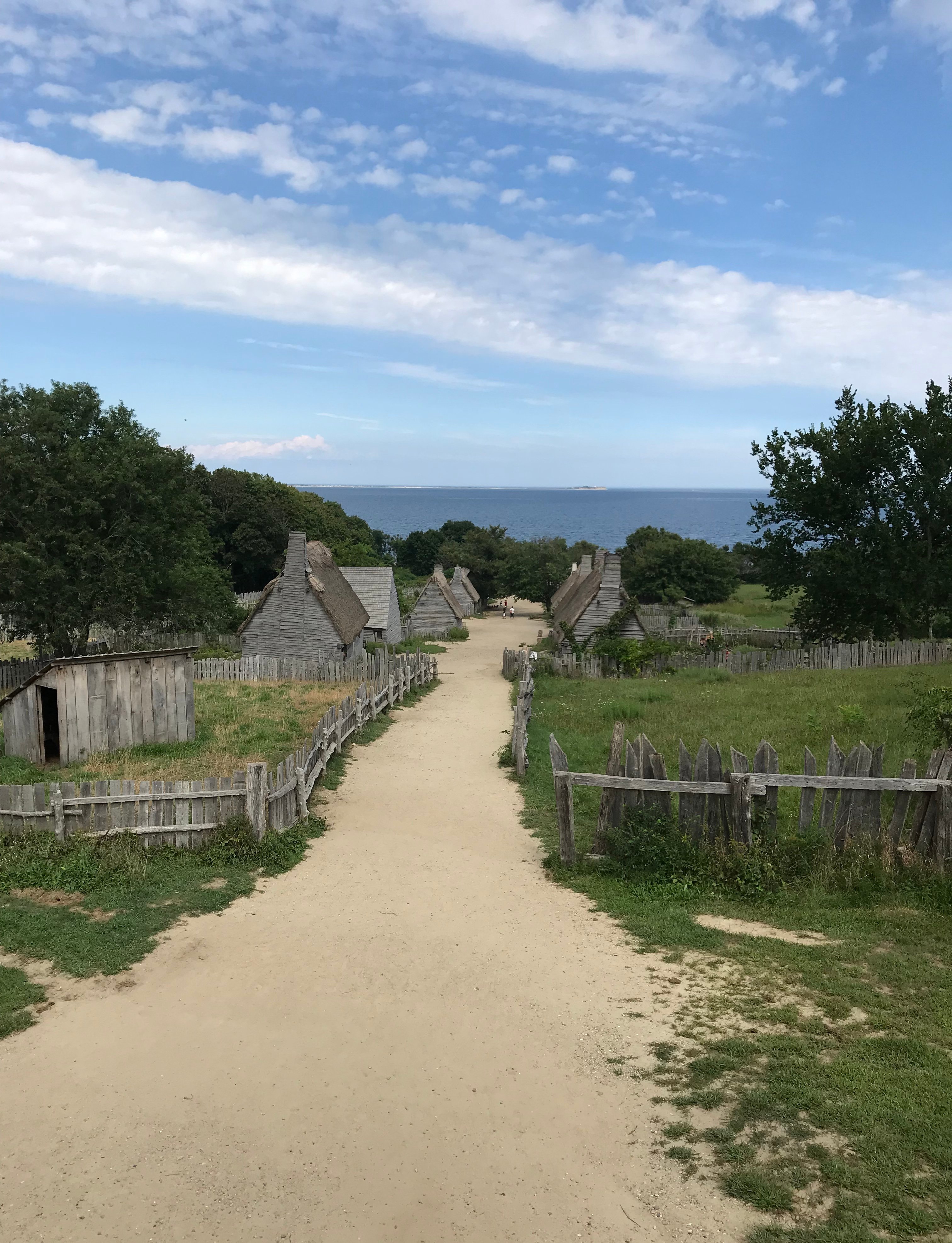
The Village.
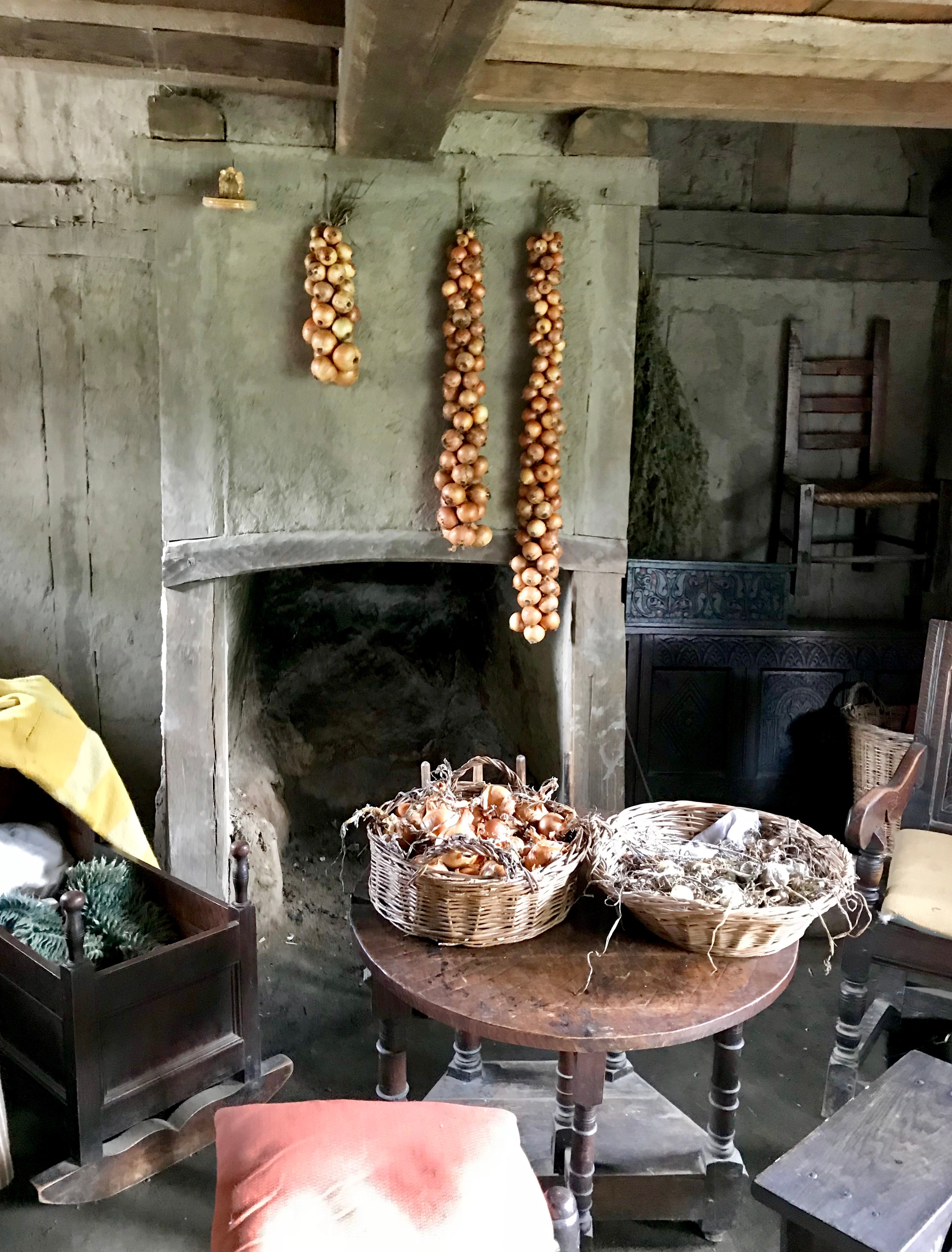
Inside one of the homes.
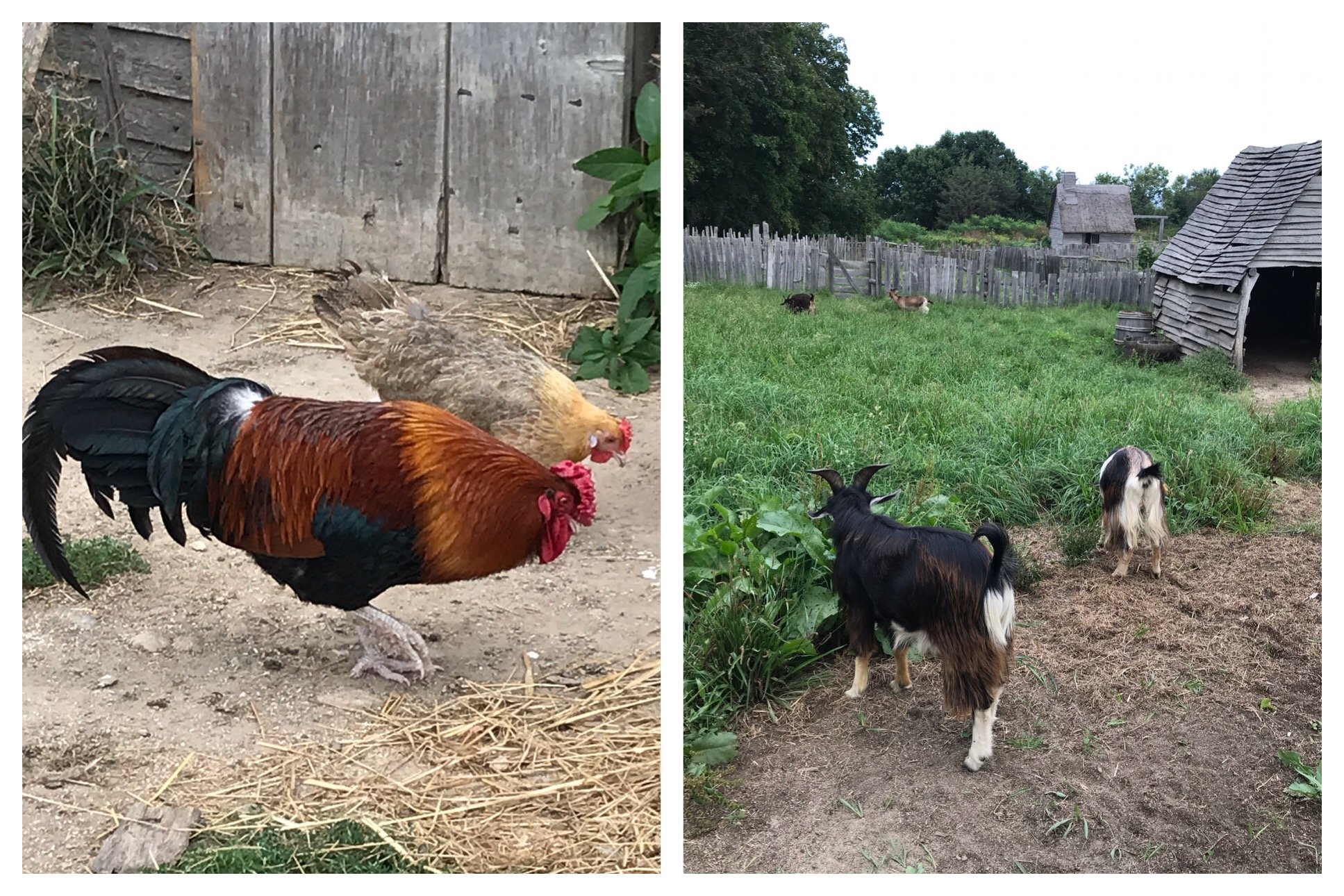
Chickens and goats.
Next stop on the Pilgrim trail... Plymouth Rock.
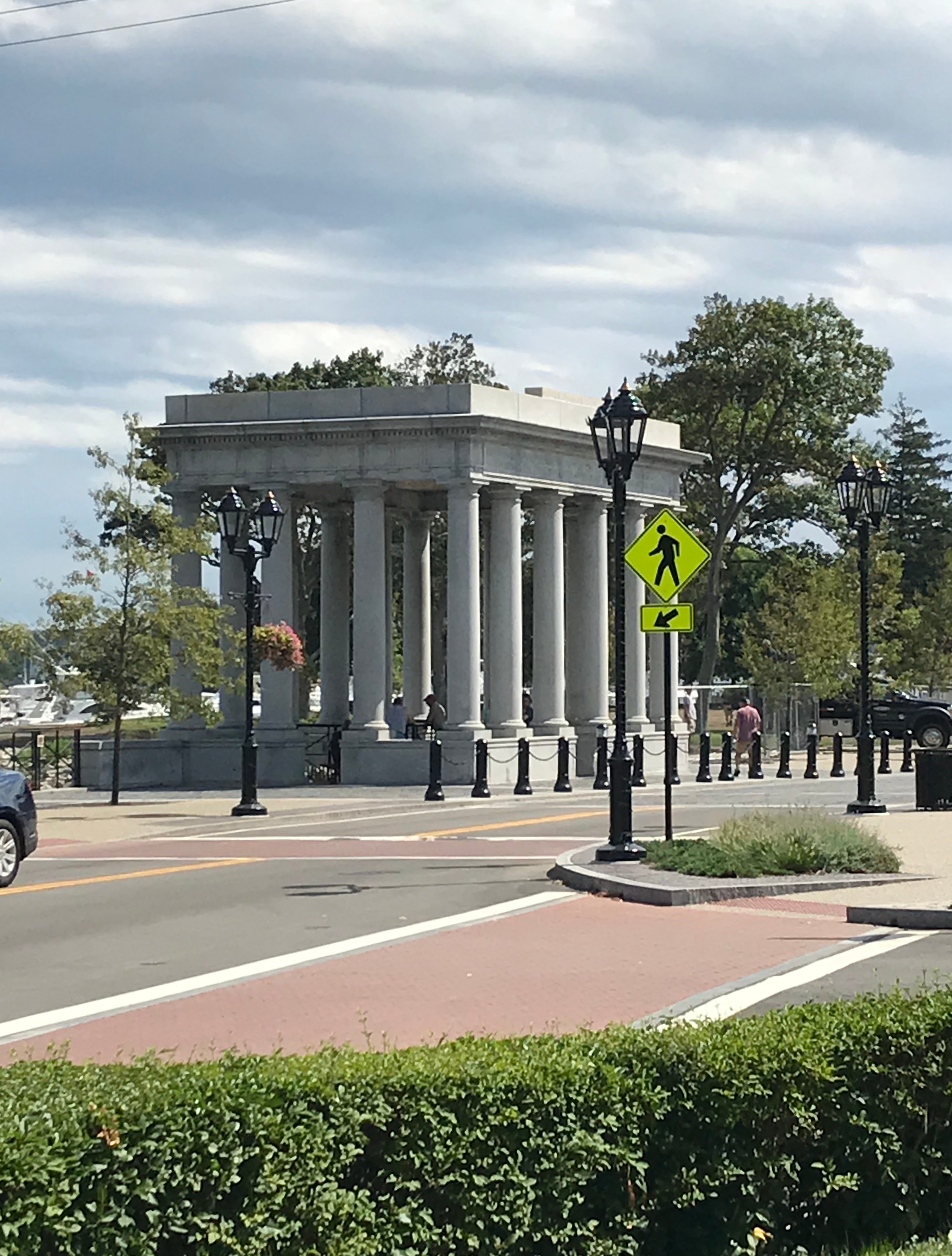
Along the waterfront in Plymouth, Massachusetts is a rock that is said to be the disembarkation point for the Mayflower colonists. The Mayflower is a ship that brought over 100 individuals to America in hopes of separating themselves from the Church of England. Though this rock was never mentioned in early historical accounts, it is still a much visited landmark.
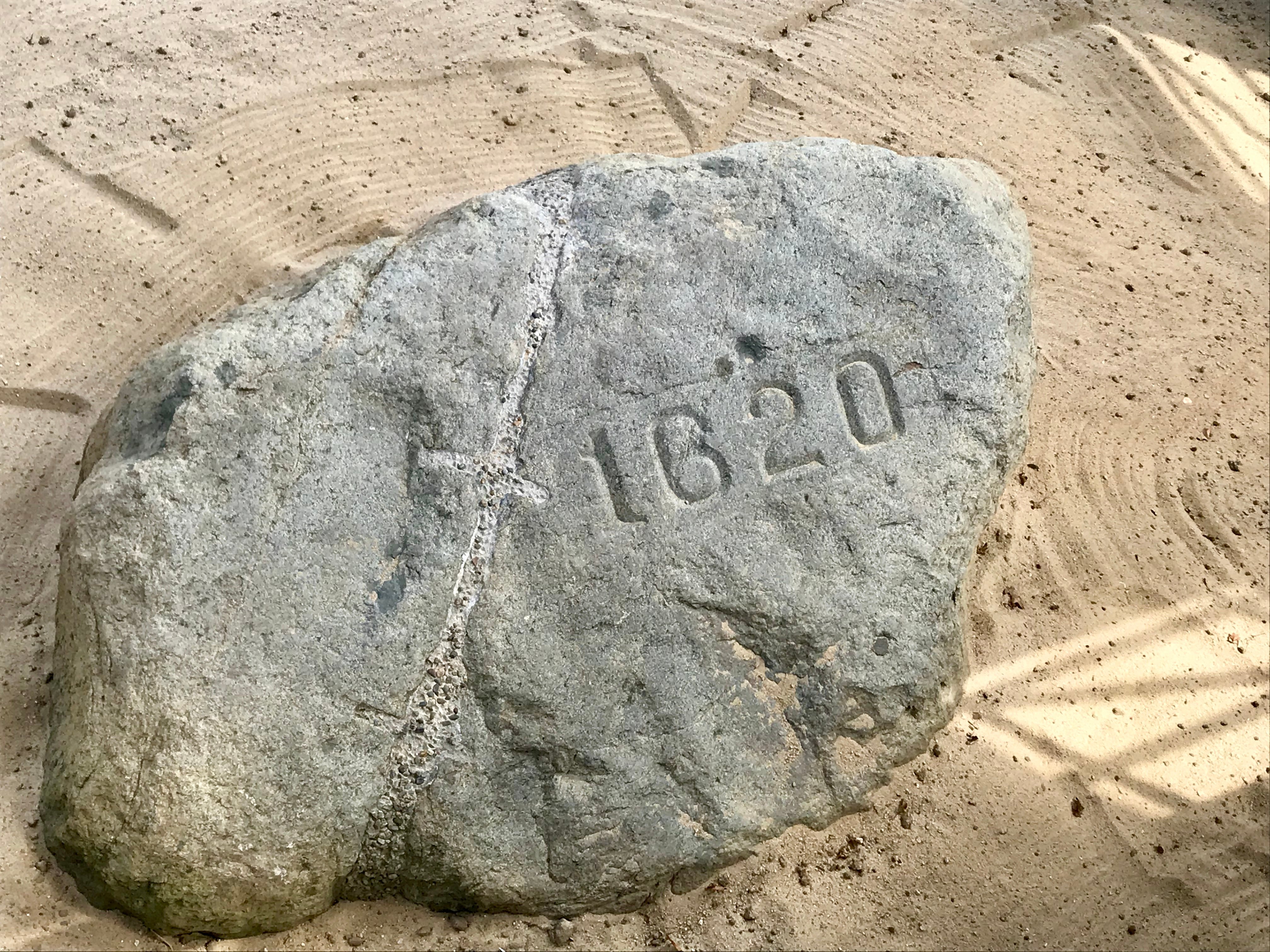
It’s a rock!
Last stop in Plymouth, Burial Hill.
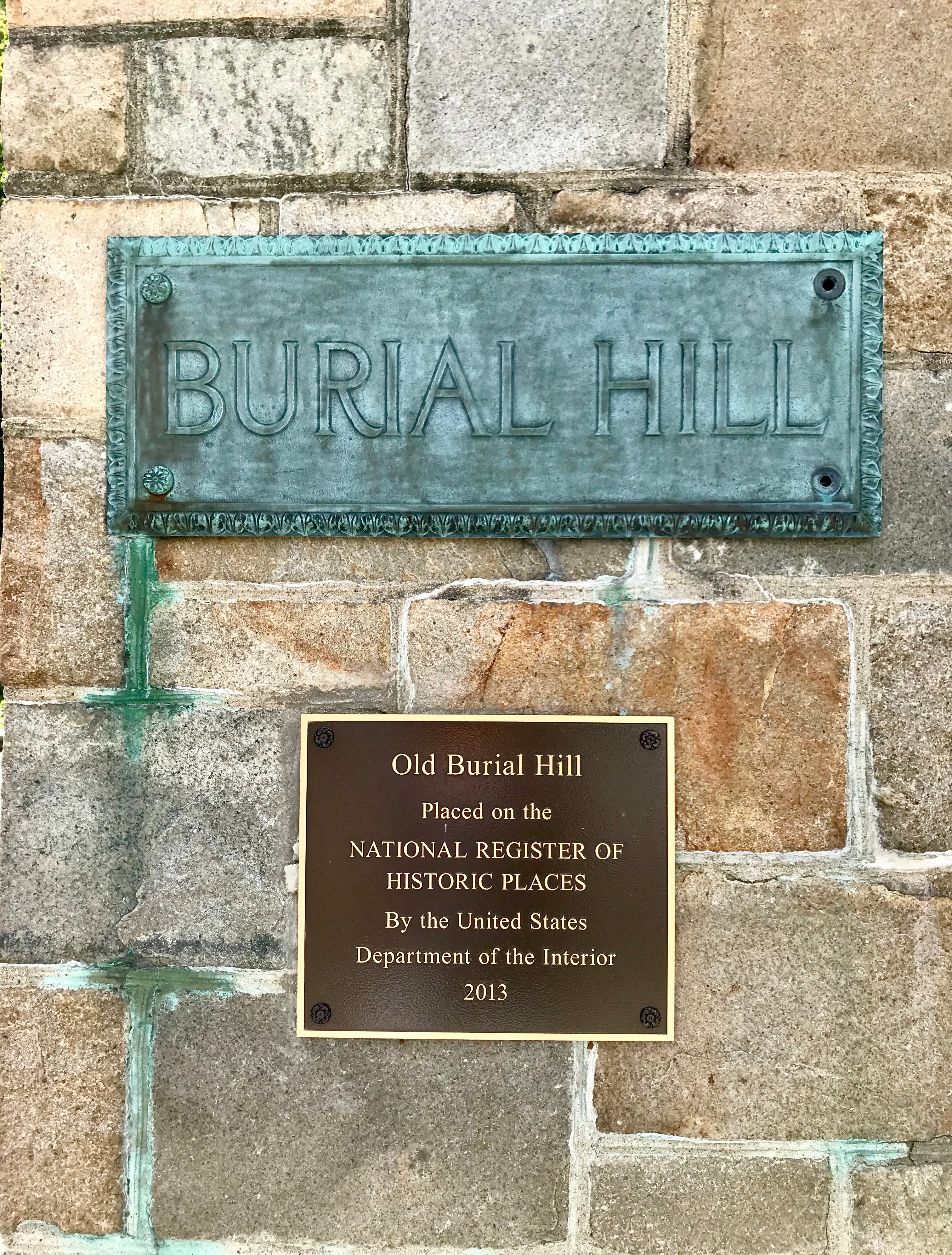
Burial Hill Cemetery was founded in 1622 alongside the site of the Mayflower colonisit’s original fort. Today it is on the National Register of Historic Places. Many of the original headstones were made of carved wood and have long since disappeared. The oldest headstone in the cemetery today dates back to 1681. The last burial here was in 1957.
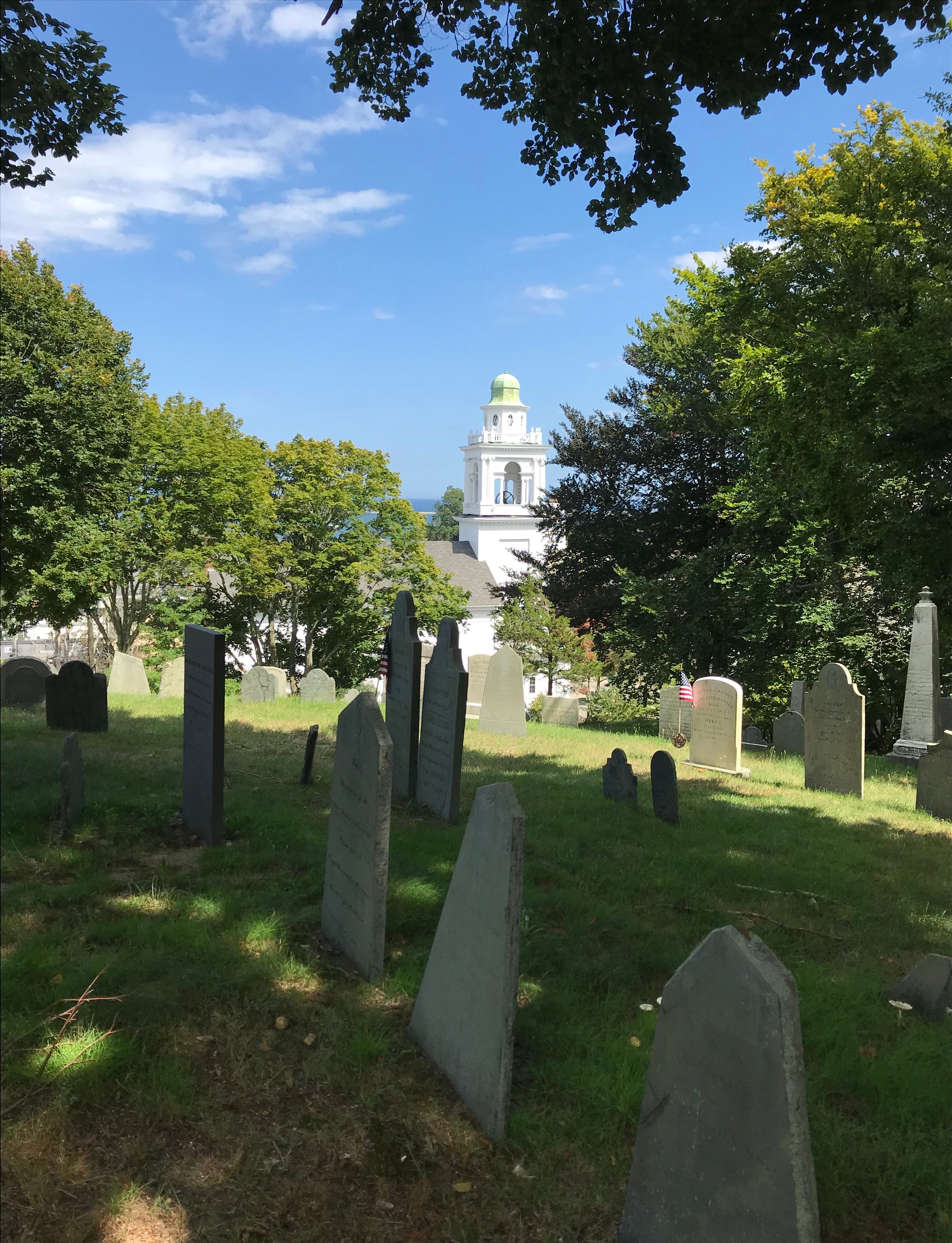
View towards the Atlantic.





